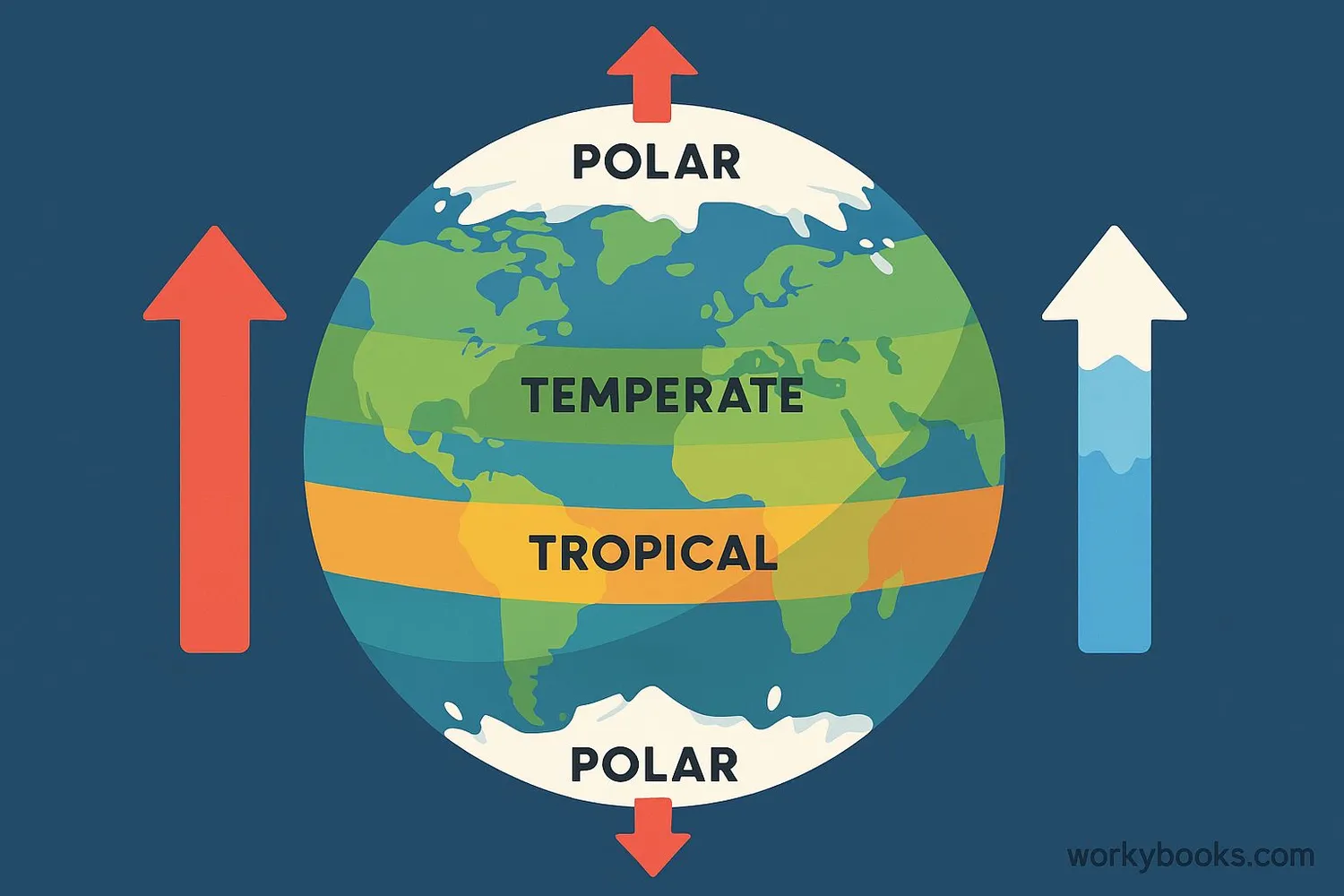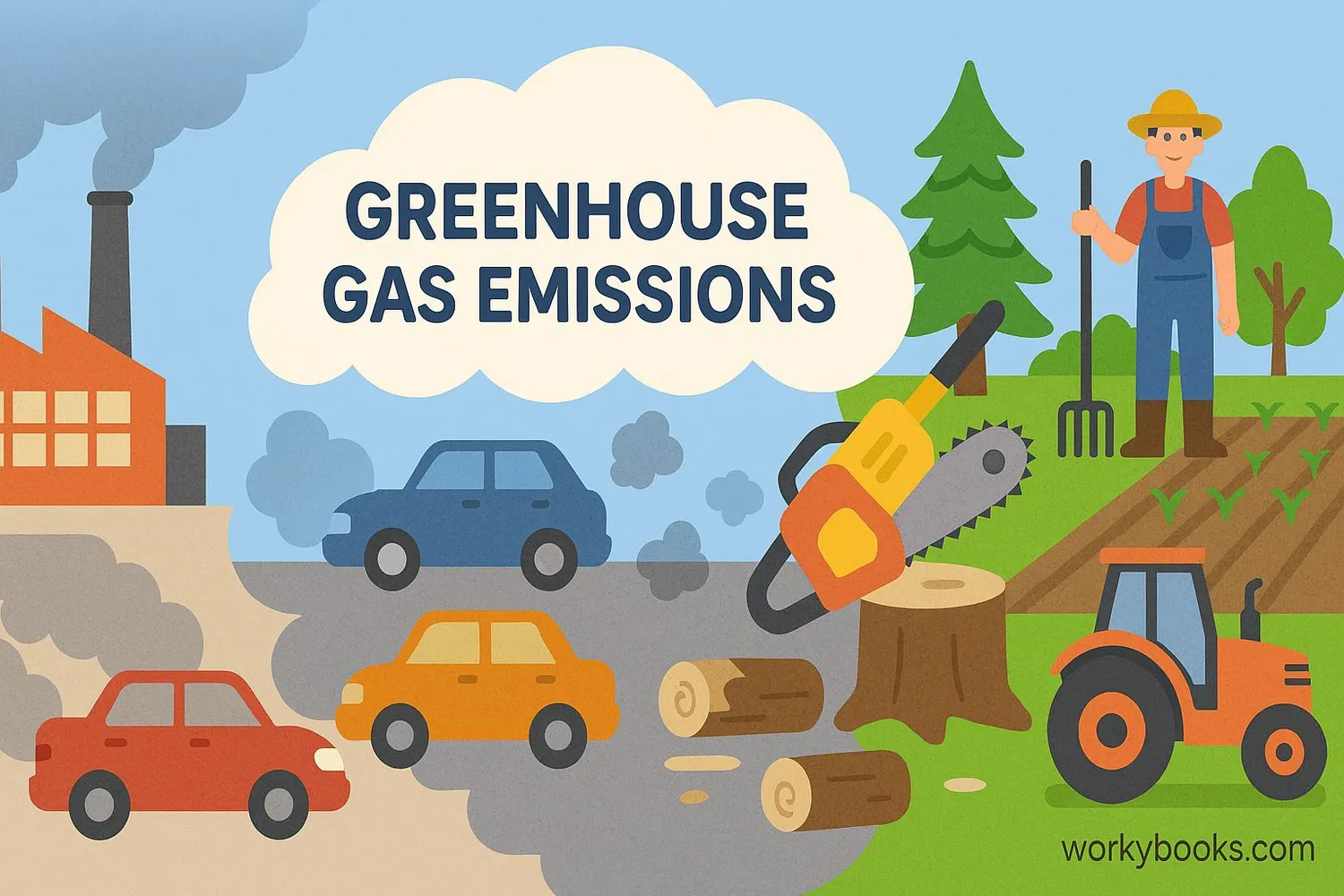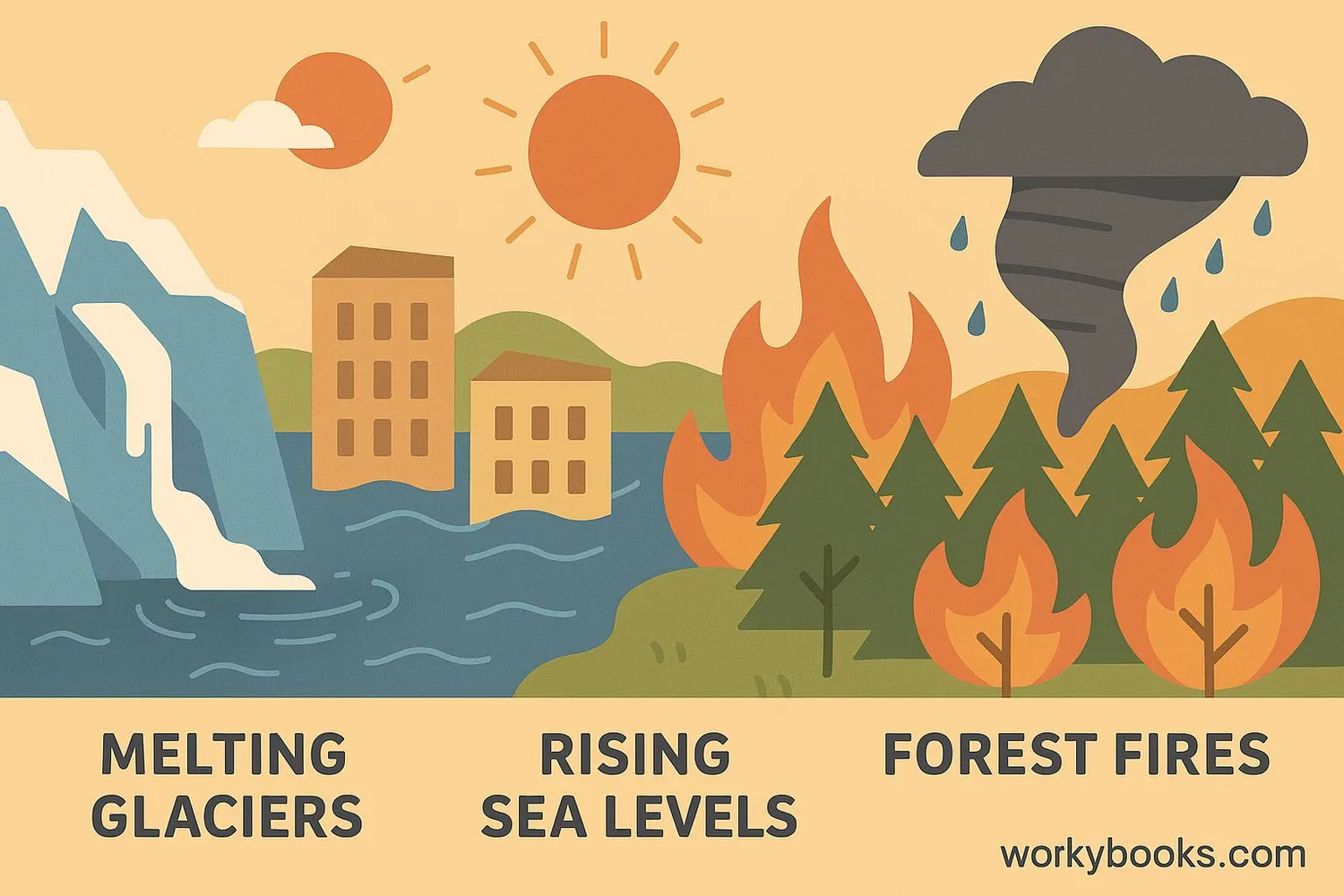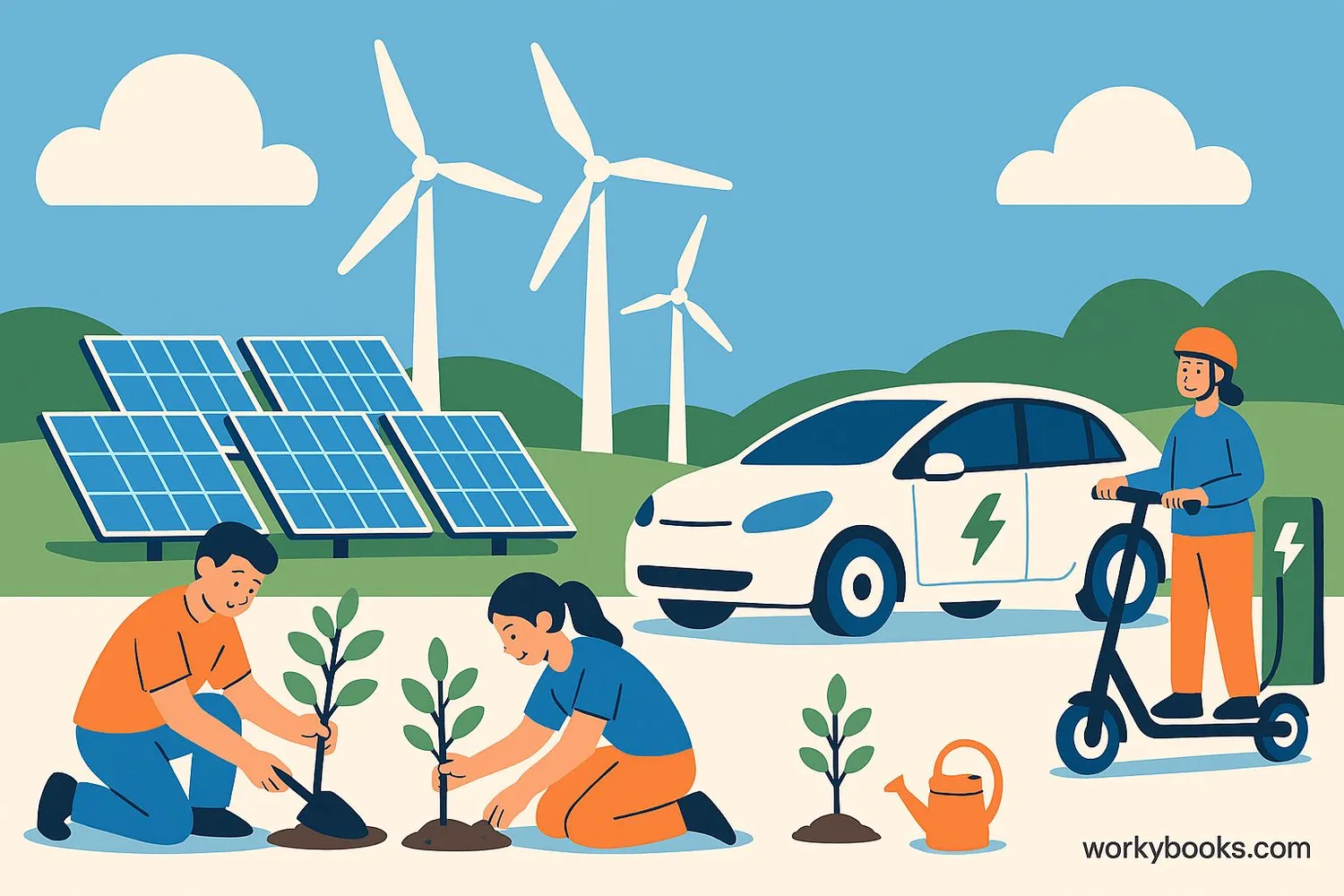Climate Change - Definition, Examples, Quiz, FAQ, Trivia
Learn how our planet is changing and what we can do to help
What is Climate Change?

Climate change refers to long-term shifts in temperatures and weather patterns. While Earth's climate has naturally changed throughout history, the changes we're seeing now are happening much faster than ever before and are primarily caused by human activities.
Think of climate as the pattern of weather in a place over many years. Climate change means these patterns are changing all around the world. For example, some places are getting warmer, others are getting more rain, and some are experiencing more extreme weather events like hurricanes or droughts.
Did you know?
The last decade (2011-2020) was the warmest on record, with each decade since the 1980s being warmer than the previous one!
Causes of Climate Change

The main cause of current climate change is human activities that release greenhouse gases into the atmosphere. These gases trap heat from the sun, causing Earth to warm up - a process called the greenhouse effect.
Here are the primary human activities contributing to climate change:
Burning Fossil Fuels
Coal, oil, and gas used for electricity, heat, and transportation
Deforestation
Cutting down forests reduces nature's ability to absorb CO₂
Agriculture
Livestock produce methane, a powerful greenhouse gas
Industrial Processes
Manufacturing releases various greenhouse gases
Waste Management
Landfills produce methane as waste decomposes
Greenhouse Gas Fact
Carbon dioxide (CO₂) is the main greenhouse gas, but methane is 25 times more powerful at trapping heat in the atmosphere!
Effects of Climate Change

Climate change affects every part of our planet. These changes impact people, animals, and ecosystems in many ways:
Warmer Temperatures
Global temperatures are rising, leading to heatwaves
Rising Sea Levels
Melting ice causes ocean levels to rise, threatening coastal areas
Extreme Weather
More intense hurricanes, droughts, floods, and wildfires
Ecosystem Changes
Animals and plants struggle to adapt to changing habitats
Food Security
Changes in weather patterns affect farming and food production
These changes don't just affect nature - they impact human communities too. People may face challenges with food and water supplies, health risks from heat and disease, and displacement from rising sea levels or extreme weather events.
Solutions to Climate Change

The good news is that we can take action to address climate change! Solutions exist at global, national, and individual levels:
Renewable Energy
Switching to solar, wind, and other clean energy sources
Energy Efficiency
Using less energy in homes, buildings, and transportation
Forest Conservation
Protecting and restoring forests that absorb CO₂
Sustainable Agriculture
Farming methods that reduce emissions and protect soil
Climate Policy
Governments creating laws to reduce emissions
Individuals can make a difference too! Simple actions like reducing energy use, eating less meat, recycling, and using public transportation all help reduce our carbon footprint. Remember, many small actions add up to big changes!
Did you know?
If food waste were a country, it would be the third-largest greenhouse gas emitter after China and the United States!
Climate Change Quiz
Test your knowledge about climate change with this quiz! Answer all 5 questions to see how much you've learned.
Frequently Asked Questions
Here are answers to common questions about climate change:
Climate Change Trivia
Discover amazing facts about our changing climate:
Record Heat
July 2023 was the hottest month ever recorded in human history, with global temperatures about 1.5°C above pre-industrial levels.
Disappearing Ice
Arctic sea ice has declined about 13% per decade since satellite measurements began in 1979. The oldest and thickest ice has declined by 95%.
Carbon Dioxide Levels
CO₂ levels are now higher than at any point in the last 800,000 years. Before the Industrial Revolution, they were around 280 parts per million - today they're over 420 ppm.
Solar Power Growth
The cost of solar panels has dropped 90% since 2010, making solar energy now cheaper than coal in most parts of the world.





